Get to Know Grand Lake
How the playing field for the FLW Tour sets up this week
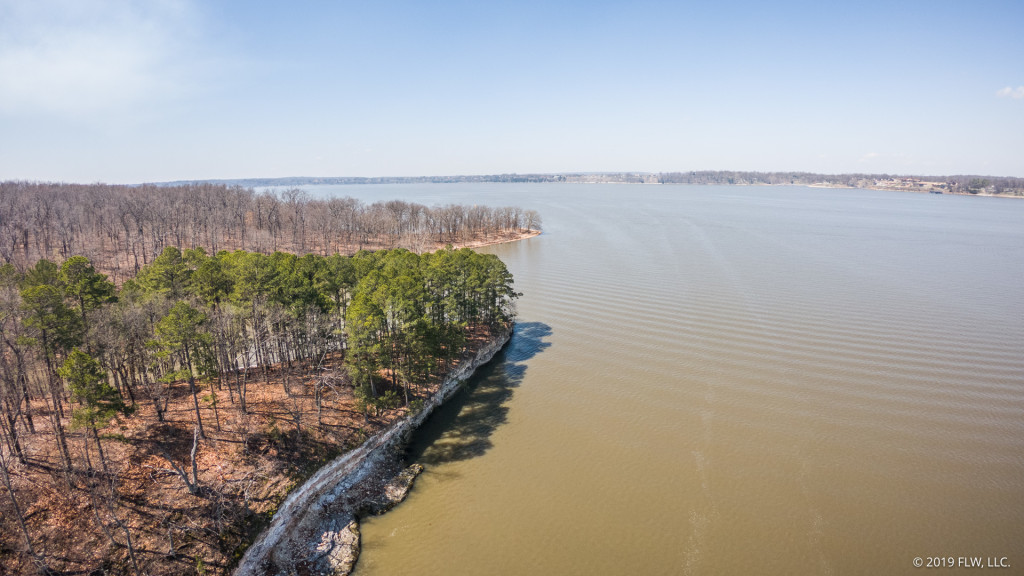
The fourth stop of the 2019 FLW Tour is presented by Mercury at Grand Lake. Though the Tour last hit the big Oklahoma lake in 2013, Grand sees plenty of tournament action, especially in the spring, and it never fails to deliver drama.
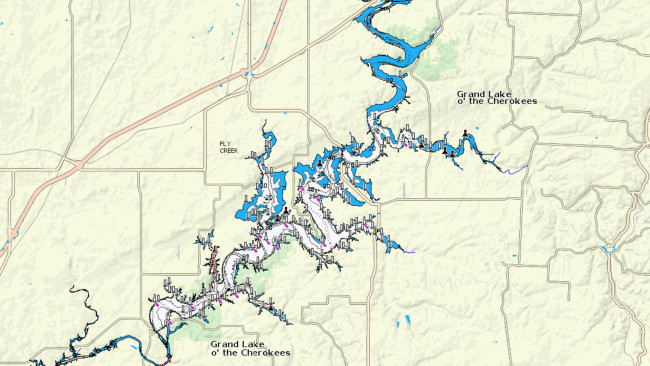
Grand is situated in northeast Oklahoma among the foothills of the Ozarks. The impoundment was created in 1940 when the Pensacola Dam was finished. The 46,500-acre reservoir is the largest impoundment on the Neosho River (which is also called the Grand River, particularly below Grand Lake), and the lake is a bit more than an hour or so from Tulsa.
Though technically in the Ozarks, the lake is a bit of a combo between a prairie lake and a true Ozark impoundment. It’s flatter and shallower than Beaver Lake and Table Rock, but you can still mistake large sections of it for the Ozarks very easily.
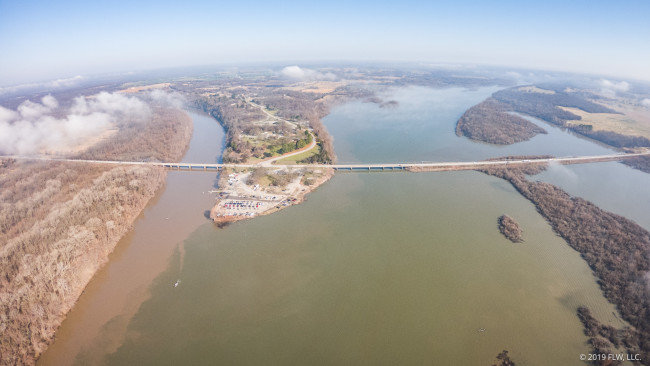
The split nature of the lake is shared by its tributaries to an extent. Flowing from Kansas in the north, the Neosho River is the primary tributary. Meeting up with it near the top of the lake, the Spring River also flows from Kansas and the western edge of Missouri. The part of the lake fed primarily by the Neosho is notably dirtier, and the upper reaches of it feature a lot of permanently shallow water strewn with laydowns. In years past, pros have pulled good finishes and good days from truly upriver stuff, most notably when Sammy Burks ran up to clean backwaters for a third-place finish in the 2016 Costa FLW Series event.
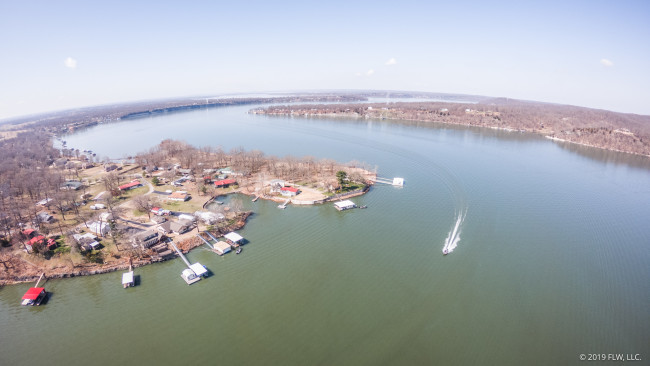
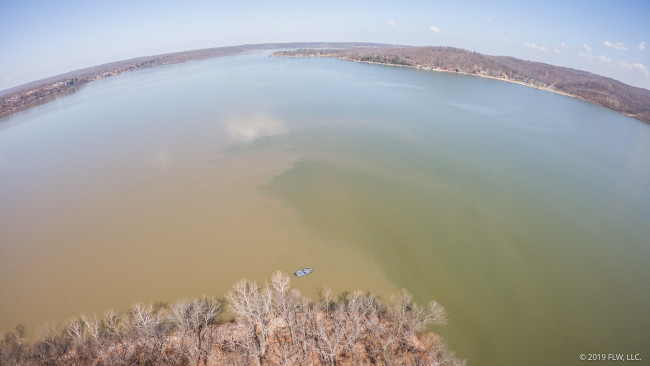
Entering the lake to the north of Sailboat Bridge, the Elk River is the clearest-running large tributary of Grand and flows from the east out of the Missouri Ozarks. The Elk has a reputation as a big tournament producer, and many lake tournaments have been won in it. However, you can say that about many sections of Grand. Because of Elk’s proximity to takeoff and the color of the water, you can expect it to get plenty of pressure this week.
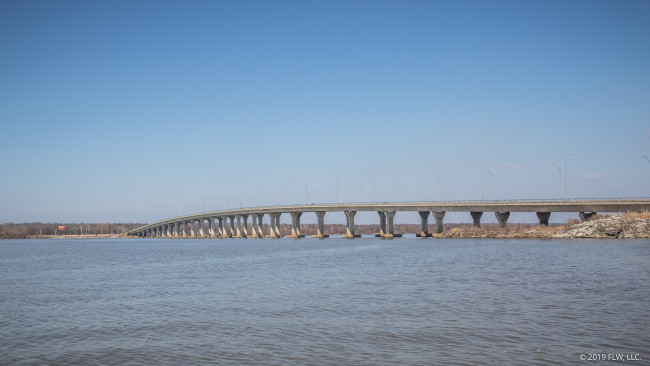
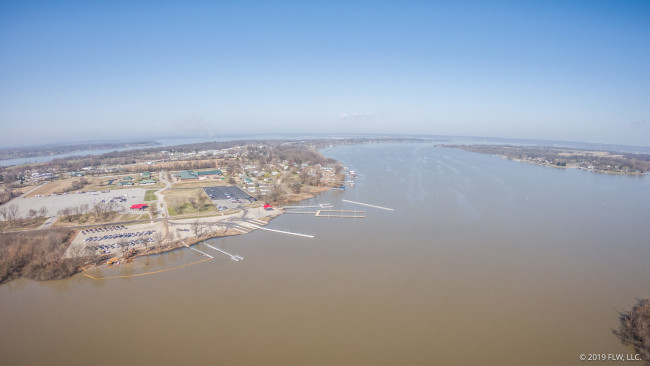
Serving as one of the most identifiable landmarks on grand, Sailboat Bridge crosses the lake just to the north of Grove. The majority of the lake is below the bridge. While it’s likely that most of the weight will come from below it, the bridge is still a good marker for where you’re at on the lake. It’s also just minutes from takeoff, which is at Wolf Creek Park, in the back of Wolf Creek.
Wolf Creek itself is known for good fishing and for a lot of release fish. It’d be no surprise to see someone make the top 10 – or even win it – fishing almost entirely in Wolf, as the population there is so good. If you wanted to compare it to something in the Ozarks, you might think of Prairie Creek on Beaver Lake (another popular community hole close to takeoff), though the two look quite different.
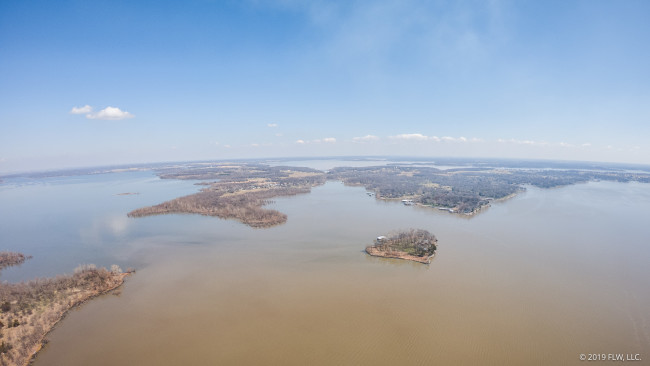
The midsection of Grand offers a lot of variety, with big creeks that are nearly their own systems and plenty of smaller stuff close to the main lake. like most of the lake, there’s a lot of history of success there, and some of the locals believe that’s where the best population of fish in the lake lives. The water color in the midsection is pretty dirty this week, but there’s some variation depending on which creek you poke into and how far back you go.
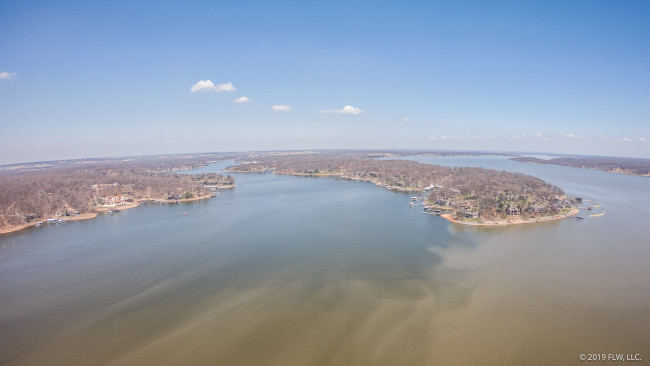
The lower end of Grand is the clearest water outside of the Elk, and it’s got plenty of fish in it. Back in 2015, when the water was super clear, Bradley Hallman waylaid them on a Spook to lock down a Costa FLW Series win. Now, the main drag of the lower end is fairly dirty, but many of the creeks have plenty of clean water in them.
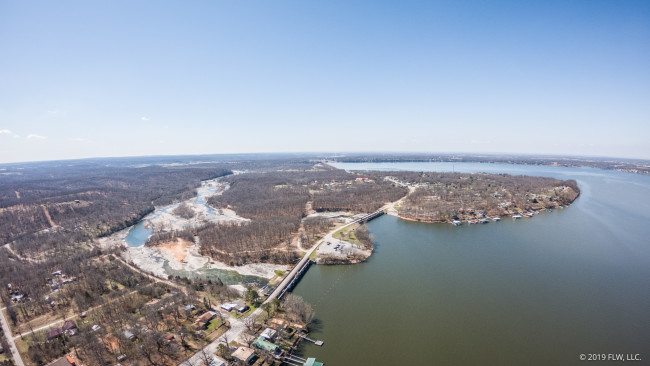
The Pensacola Dam was built on the Neosho between 1938 and 1940 and was the first hydroelectric facility constructed in Oklahoma. It is one of the longer buttress dams you’ll find, and has a generation station at its west end. A primary spillway and two secondary spillways are located to the east.
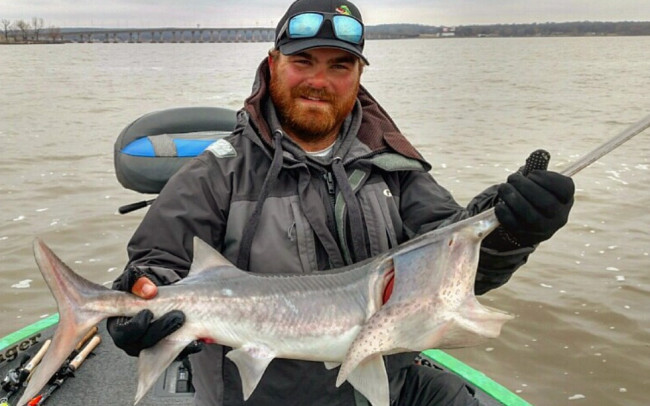
The Neosho River and its associated lakes comprise one of the primary paddlefish (sometimes called spoonbill) fisheries in the country. It’s a fish that Oklahoma is known for, and the fishery is tightly regulated, with a limit of one per day and just two per year. Austin Wilson snagged a small one in pre-practice on a swimbait, and anglers targeting them usually snag them with big barbless trebles. Paddlefish are filter feeders, thus necessitating snagging, and there have been reports of specimens up to 55 years old and more than 7 feet long. Outside of the American paddlefish, the only other species is the Chinese paddlefish, which can grow up to 9 feet long. Sturgeons and paddlefish both belong to the same family, and their eggs are highly prized for caviar.
Oklahoma paddlefish regulations
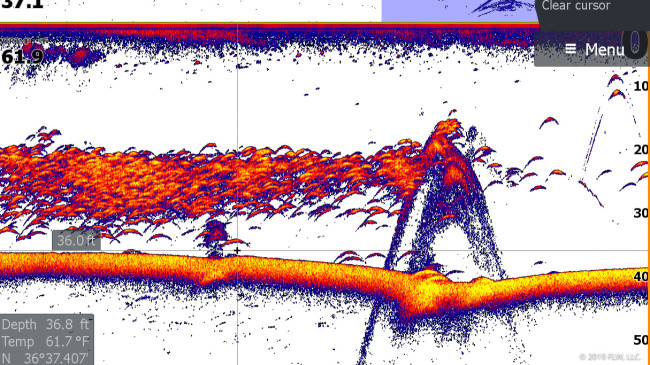
One consistent report from practice is that a lot of the fish are probably suspended at the moment. You can find bait on your graph seemingly everywhere, but most of it doesn’t seem to be accompanied by bass. Though umbrella rigs are not allowed, they would probably play pretty strong if they were. If anyone does figure out how to effectively target the bass that aren’t on the bank, good things could happen pretty quick.
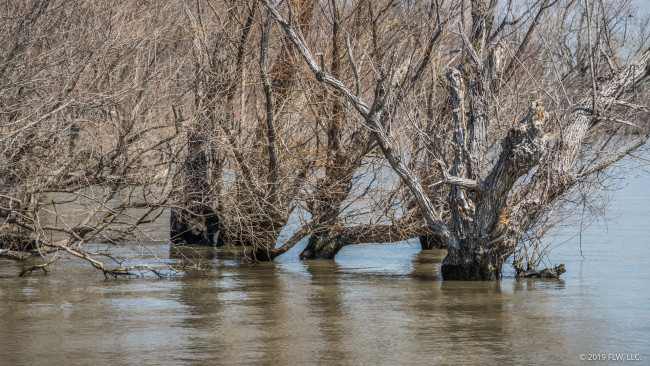
Grand is over full pool right now, but it’s not necessarily high enough to be useful to anglers that want to flip. Though there is more water on shoreline wood up the river, bushes and things like that aren’t really in water that is deep enough for a lot of bass to get in them. The water has ticked down each day during practice, and it seems like that trend will continue. Though, due to rain up in Kansas and rain in the forecast at Grand, that’s not a guarantee. If a flipping bite does develop, there are good odds that it happens during the event or will only be discovered by a handful of anglers.
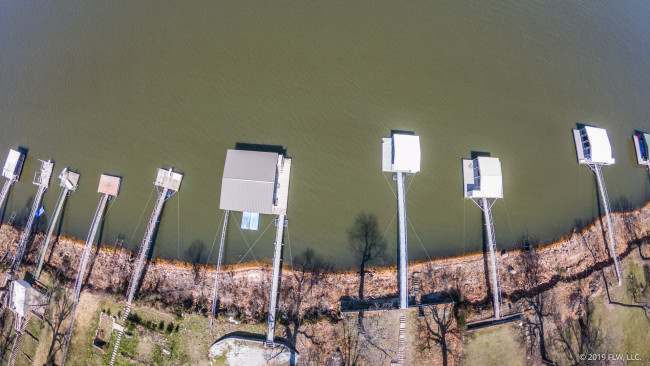
As for the actual cover on the lake, the most prevalent options are docks, rock and wood. Grand has plenty of brush piles, tons of rock and a pile of docks. Most of the docks are floaters with cables behind them, and historically a lot of fish are caught from the backs of docks, requiring circus-style shenanigans to land them.
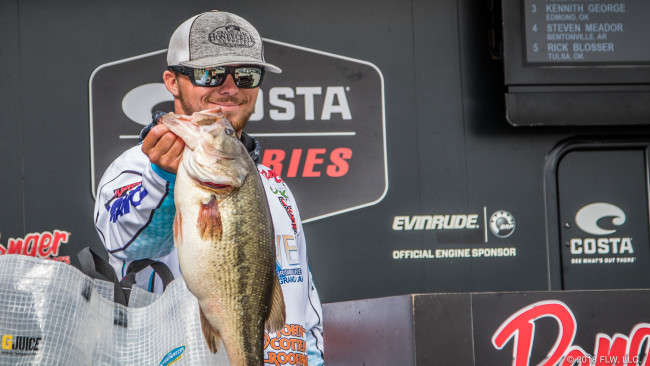
Though a lot of anglers have been a bit disgruntled by practice, weights should still be good, and there’s a chance that the switch could flip to the right side any day of the tournament. The lake is fully prespawn, which means that all the fish are fat and happy, so when you do catch one, it usually is going to go a long way at weigh-in.